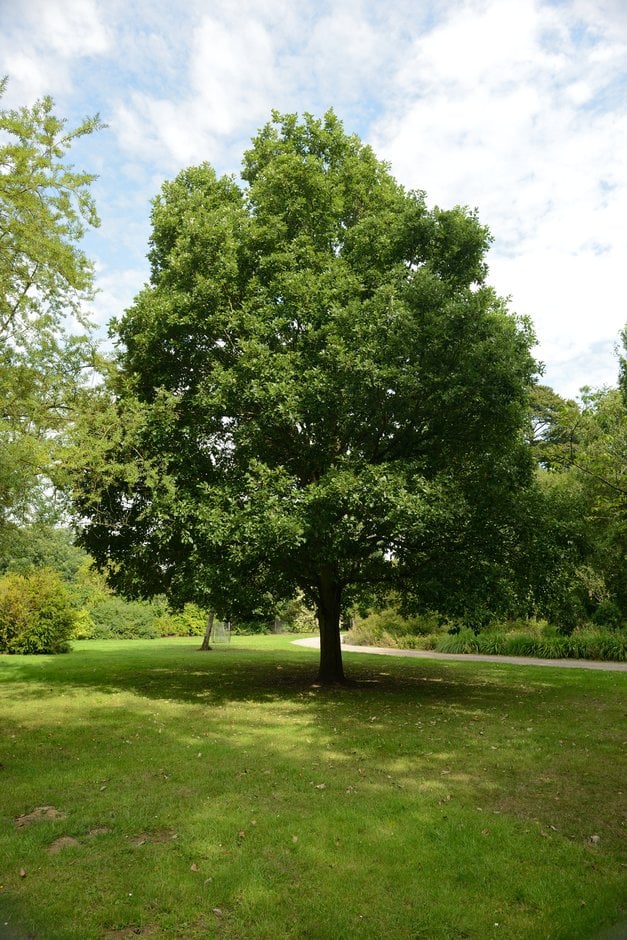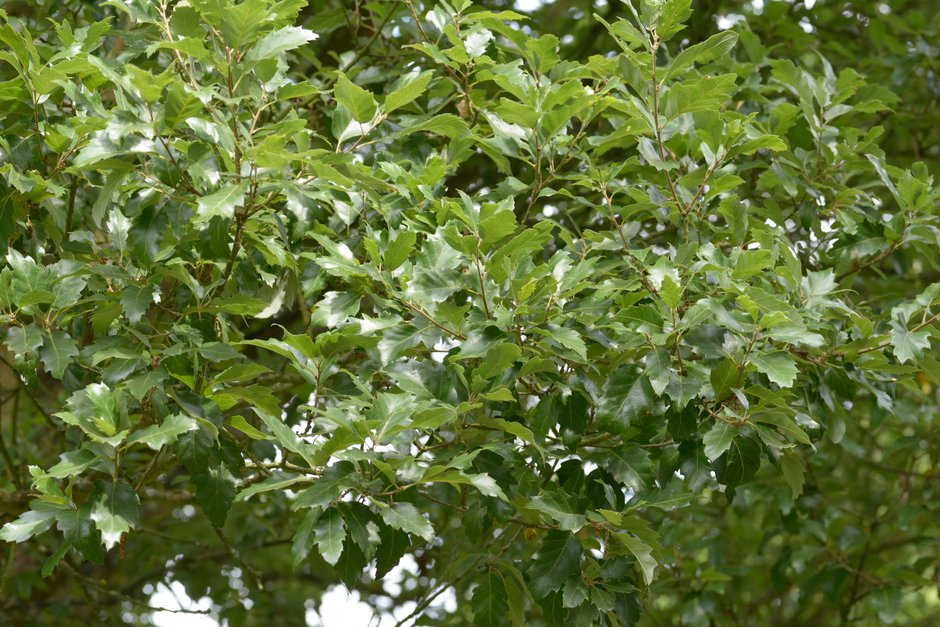Quercus × crenata 'Ambrozyana'
oak 'Ambrozyana
A semi-evergreen, bushy tree with a broadly ovate crown and thick, fissured bark, eventually reaching up to around 14m high. Oblong to ovate leaves are up to 12cm long with a leathery texture and 6-9 shallow lobes. The dark green leaves have a greyish-green felty underside and often persist on the trees until spring unless the winter weather is very severe
Synonyms
Quercus × lucombeana 'Ambrozyana'Quercus cerris 'Ambrozyana'
see moreQuercus × hispanica 'Ambrozyana'
Quercus ambrozyana
Size
Ultimate height
Higher than 12 metresTime to ultimate height
20–50 yearsUltimate spread
Wider than 8 metresGrowing conditions
Moisture
Moist but well–drainedpH
Acid, Alkaline, NeutralColour & scent
| Stem | Flower | Foliage | Fruit | |
| Spring | Green | |||
|---|---|---|---|---|
| Summer | Green | |||
| Autumn | Green | |||
| Winter | Green |
Position
- Full sun
- Partial shade
Aspect
East–facing or South–facing or West–facing or North–facing
Exposure
Exposed or Sheltered Hardiness
H6Botanical details
- Family
- Fagaceae
- Native to GB / Ireland
- No
- Foliage
- Semi evergreen
- Habit
- Bushy
- Potentially harmful
- Pets (dogs): Harmful if eaten - for further information and contact numbers regarding pets, see the HTA guide to potentially harmful plants
- Genus
Quercus can be deciduous or evergreen trees or shrubs, with entire, lobed or toothed leaves; flowers inconspicuous, followed by characteristic acorns; sometimes good autumn colour
- Name status
Accepted
How to grow
Cultivation
Grow in deep, fertile, well-drained soil in full sun or partial shade. Trees should retain leaves throughout winter once established unless planted in very exposed positions or subjected to prolonged, severe winter weather. See tree cultivation for further advice
Propagation
Propagate by grafting in mid-autumn or late winter
Suggested planting locations and garden types
- Architectural
- Coastal
- Low Maintenance
Pruning
Pests
May be susceptible to oak processionary moth, aphids, caterpillars, leaf-mining moths and oak gall wasps
Diseases
May be susceptible to powdery mildews and honey fungus
Love gardening
Sign up to receive regular gardening tips, inspiration, offers and more
View our Privacy Policy
Get involved
The Royal Horticultural Society is the UK’s leading gardening charity. We aim to enrich everyone’s life through plants, and make the UK a greener and more beautiful place.

